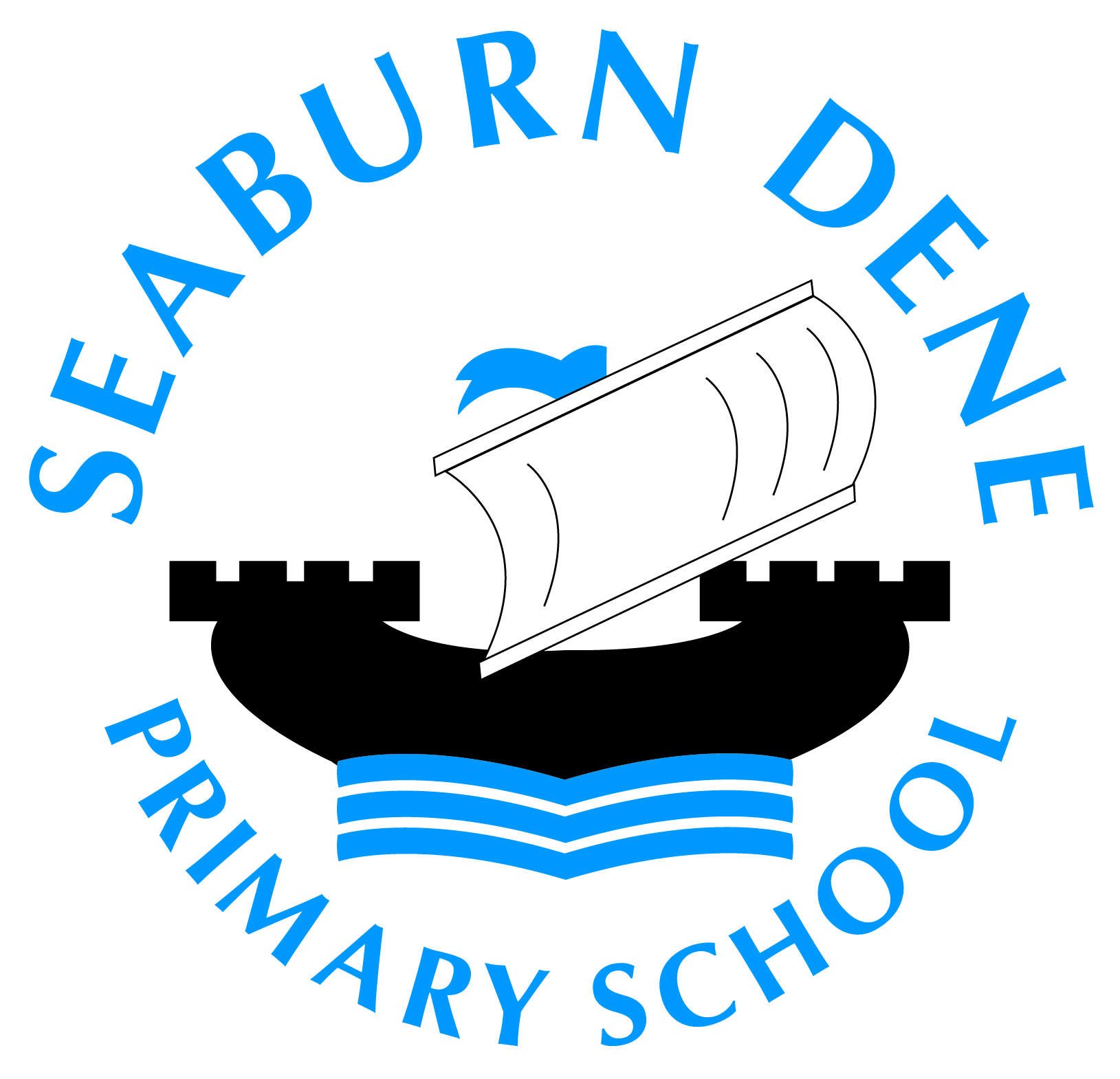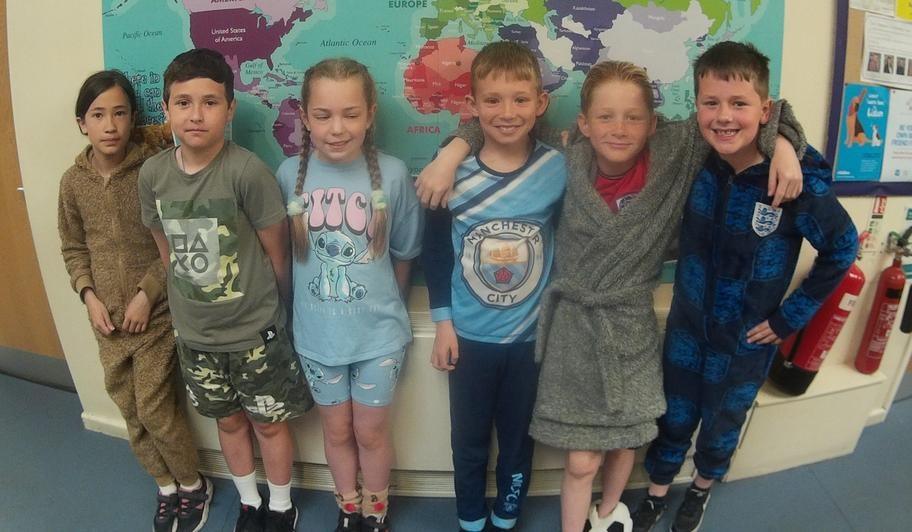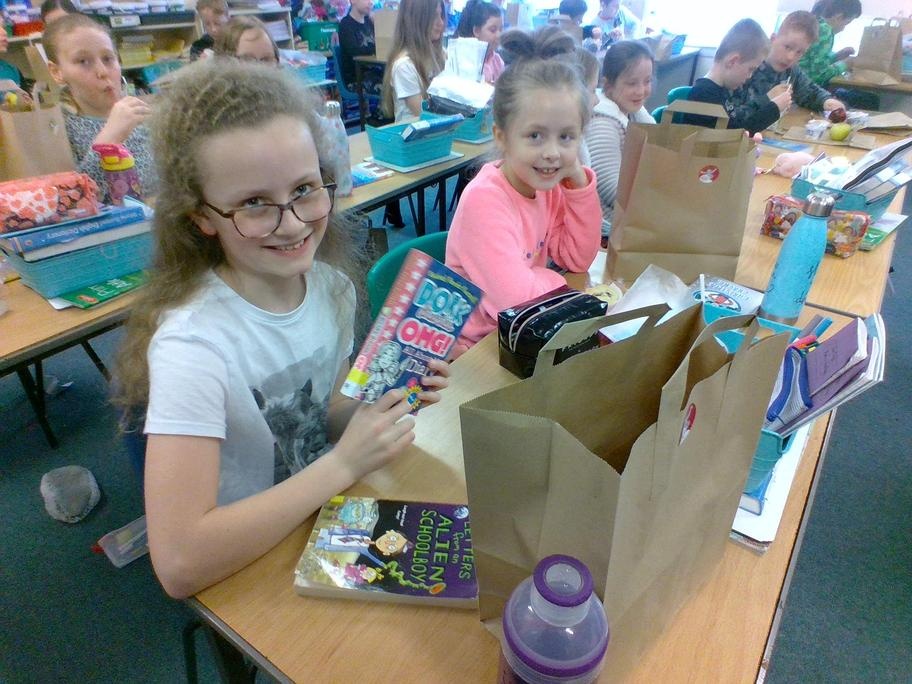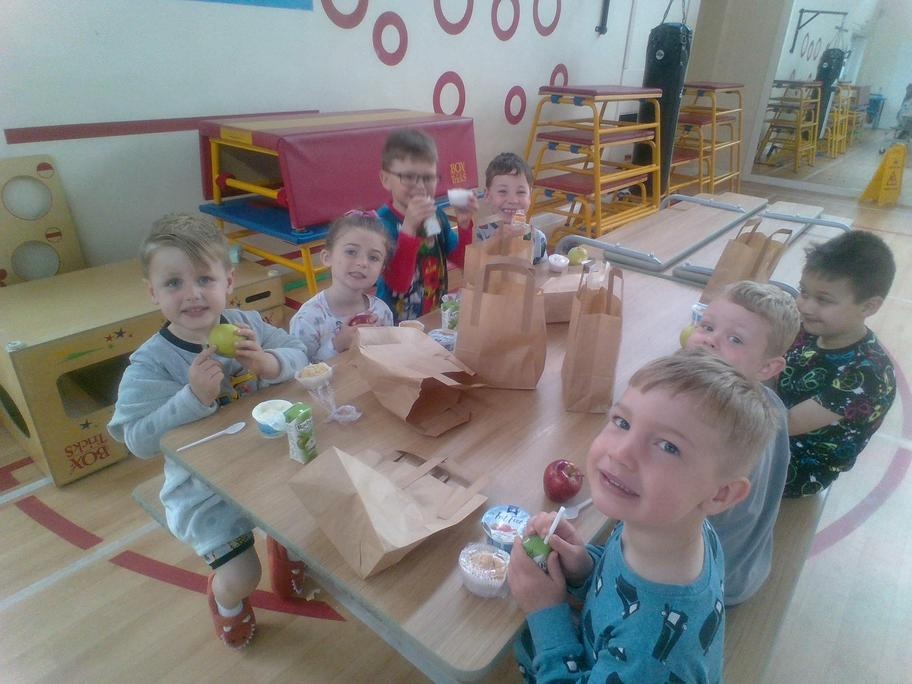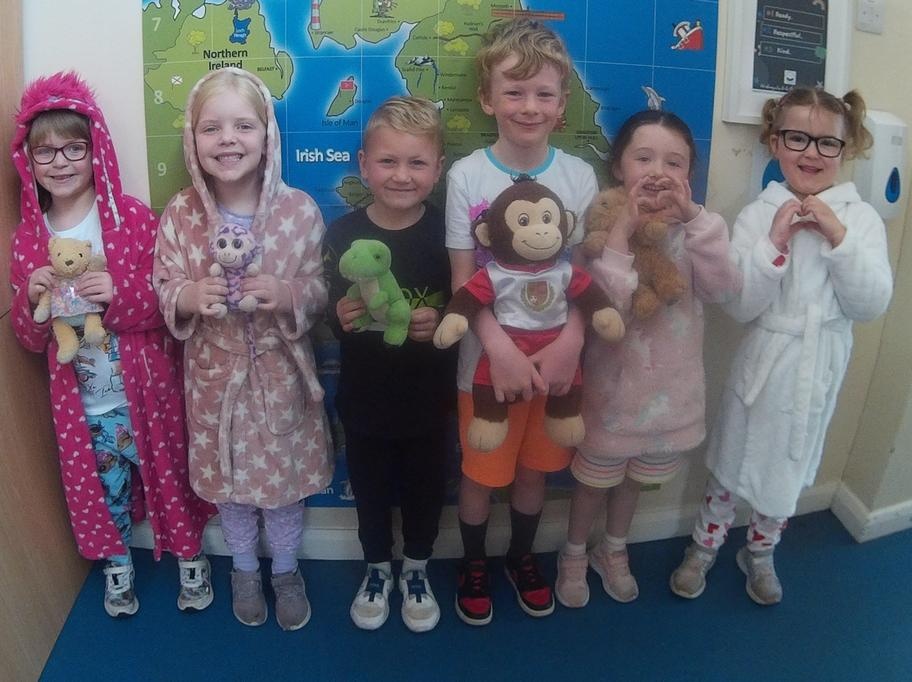Reading including phonics
Phonics at Seaburn Dene Primary School
At Seaburn Dene Primary School we aim for all our children to become fluent, confident readers who are passionate about and engaged by reading.
Children who read regularly or are read to regularly have the opportunity to open the doors to so many different worlds! More importantly, reading will give your child the tools to become independent life-long learners. We can achieve this together through:
- Read Write Inc, a programme to help your child read at school
- Encouraging children to develop a love of books by reading to them daily, at home and at school
- Giving children access to a wide range of books at school and at home
At Seaburn Dene, we use Read Write Inc Phonics (RWI) to give your child the best possible start with their English. Mrs Wilson is our Early Reading (including Phonics leader), so if you have questions about RWI, contact school who can refer you to her. Please take the time to read the information as it will provide invaluable information as to how you can help and support your child in reading.
What is Read Write Inc?
Read Write Inc (RWI) is a phonics complete literacy programme which helps all children learn to read fluently and at speed so they can focus on developing their skills in comprehension, vocabulary and spelling. The programme is designed for children aged 4-7. However, at Seaburn Dene, we begin the programme in Nursery in the Spring term and will continue teaching RWI to children beyond the age of 7 if they still need support in their reading.
RWI was developed by Ruth Miskin and more information on this can be found at
How will RWI be taught?
All children are assessed regularly by our RWI lead teacher and staff so they work with children at the same level. This allows complete participation in lessons.
Nursery
Children will be introduced to the initial sounds in short five minute sessions.
Reception
In Reception all children will learn how to ‘read’ the sounds in words and how those sounds can be written down. Those who are ready will begin to read and write simple words within books.
Reading
The children:
- learn 44 sounds and the corresponding letters/letter groups using simple picture prompts – see below
- learn to read words using Fred talk and sound blending
- read from a range of storybooks and non-fictions books matched to their phonic knowledge
- work well with partners
- develop comprehension skills in stories by answering ‘Find It’ and ‘Prove It’ discussion questions
Writing
The children (alongside the Write Stuff) :
- learn to write and form the letters/letter groups which represent the 44 sounds with the help of fun phrases
- learn to write words by using Fred Talk
- learn to build sentences by practising sentences out loud before they write
Talking
The children
- They work in pairs so that they:
- answer every question
- practise every activity with their partner
- take turns in talking and reading to each other
- develop ambitious vocabulary
Year 1 and above
Children follow the same format as Reception but will work on complex sounds and read books appropriate to their reading level. Daily sessions of RWI phonics last for approximately one hour. Once children become fluent speedy readers they will move on to whole class English lessons
Five key principles underpin the teaching in all Read Write Inc. sessions:
Purpose – know the purpose of every activity and share it with the children, so they know the one thing they should be thinking about
Participation – ensure every child participates throughout the lesson. Partnership work is fundamental to learning
Praise – ensure children are praised for effort and learning, not ability
Pace – teach at an effective pace and devote every moment to teaching and learning
Passion – be passionate about teaching so children can be engaged emotionally.
Children will be taught how to read as follows:
Before you start to teach your child, practise saying the sounds below. These are the sounds we use to speak in English.
Fred Talk
We use pure sounds (‘m’ not’ muh’,’s’ not ‘suh’, etc.) so that your child will be able to blend the sounds into words more easily.
At school we use a puppet called Fred who is an expert on sounding out words! we call it, ‘Fred Talk’. E.g. m-o-p, c-a-t, m-a-n, sh-o-p, b-l-a-ck.
The following video is an example of blending sounds with Fred.
https://www.youtube.com/watch?v=MNyFikwNQTg
The children are taught the sounds in 3 sets.
Step 1:
Set 1 Sounds are taught in the following order together with rhymes to help children form the letters correctly and instantly recognise sounds ready for blending.
| Set 1 | |
| Sound | Rhyme |
| m | Down Maisie then over the two mountains. Maisie, mountain, mountain. |
| a | Round the apple, down the leaf. |
| s | Slide around the snake |
| d | Round the dinosaur’s back, up his neck and down to his feet. |
| t | Down the tower, across the tower, |
| i | Down the insects body, dot for the head. |
| n | Down Nobby and over the net. |
| p | Down the plait, up and over the pirates face. |
| g | Round the girls face, down her hair and give her a curl |
| o | All around the orange |
| c | Curl around the caterpillar |
| k | Down the kangaroos body, tail and leg |
| u | Down and under the umbrella, up to the top and down to the puddle |
| b | Down the laces, over the toe and touch the heel |
| f | Down the stem and draw the leaves |
| e | Slice into the egg, go over the top, then under the egg |
| l | Down the long leg |
| h | Down the horse’s head to the hooves and over his back |
| sh | Slither down the snake, then down the horse’s head to the hooves and over his back |
| r | Down the robot’s back, then up and curl |
| j | Down his body, curl and dot |
| v | Down a wing, up a wing |
| y | Down a horn, up a horn and under the yak’s head. |
| w | Down, up, down, up the worm. |
| th | Down the tower, across the tower, then down the horse’s head to the hooves and over his back |
| z | Zig-zag-zig, down the zip. |
| ch | Curl around the caterpillar, , then down the horse’s head to the hooves and over his back |
| qu | Round the queen’s head, up to her crown, down her hair and curl |
| x | Cross down the arm and leg and cross the other way |
| ng | A thing on a string |
| nk | I think I stink |
Please do not use letter names at this early stage.
Children will also use pictures for each sound to help recognise the sound and then form the shape of the sound.
Step 2:
The children are then taught Set 2 Sounds – the long vowels. When they are very confident with all of set 1 and 2 they are taught Set 3 Sounds.
|
Long vowel sound
|
Set 2 Speed Sound cards
Teach these first |
Set 3 Speed Sound cards |
|
| ay | ay: may I play | a-e: make a cake | ai: snail in the rain |
| ee | ee: what can you see | ea: cup of tea | e: he me we she be |
| igh | igh: fly high | i-e: nice smile | |
| ow | ow: blow the snow | o-e: phone home | ao: goat in a boat |
| oo | oo: poo at the zoo | u-e: huge brute | ew: chew the stew |
| oo | oo: look at a book | ||
| ar | ar: start the car | ||
| or | or: shut the door | aw: yawn at dawn | |
| air | air: that’s not fair | are: share and care | |
| ir | ir: whirl and twirl | ur: nurse for a purse | er: a better letter |
| ou | ou: shout it out | ow: brown cow | |
| oy | oy: toy for a boy | oi: spoil the boy | |
| ire | ire: fire fire! | ||
| ear | ear: hear with your ear | ||
| ure | ure: sure it’s pure? |
Nonsense words (Alien words)
As well as learning to read and blend real words children will have plenty of opportunities to apply their sound recognition skills on reading ‘Nonsense words’. These are made up of the sounds the children are learning e.g. d-u-t (dut), d-oi-n (doin), h-e-sh (hesh).
Step 3:
Children will be introduced to ‘Ditty books’ when they successfully begin to read single words. The short vowels should be kept short and sharp:
Children use sound-blending (Fred Talk) to read short ditties. They will bring these home once they have read and discussed the book in class. Children will then be challenged to use their developing phonic knowledge to write short sentences.
Within all the books children will have red and green words to learn to help them to become speedy readers. Red words are words that are not easily decodable and challenge words to extend children’s vocabulary. Green words are linked to the sounds they have been learning and are easily decodable.
Dots and dashes represent the sound each letter makes.
During the RWI session children will read the book three times and at each new reading they will have plenty of opportunities to practise using their developing comprehension skills. You may have heard your child talking about ‘hold, edit or build a sentence’.
Hold a sentence is an activity that encourages children to remember a whole sentence while focusing on spelling and punctuation.
Build a sentence is to give children the opportunity to create their own sentence to that shows the meaning of a word and edit a sentence allows the children to critique a sentence using their knowledge of spelling punctuation and grammar. Children complete a longer piece of independent writing, which gives them the opportunity to show off their creativity and to practice their spelling, grammar and punctuation.
Spelling
Spelling will only start in Reception when children are ready to write and form their letters. Children will use first use ‘Fred fingers’ to first sound out a word before they write it down. Children learn how to spell rather than just get tested. Furthermore, this way of teaching spellings allows children to use Fred fingers whenever they get stuck with spelling a word. Children pinch each sound on fingers before writing the word.
Order of Story books:
Children will hopefully follow the order listed below. The expectation is that all children will leave Year One as confident speedy readers, ready to take on the challenges of Year Two. However, some children may need extra support and your teacher will talk to you about this.
Books |
Green Words in Books |
| Red Ditty 1-10 | Click here to help your child |
| Green 1-10 | Click here to help your child |
| Purple 1-10 | Click here to help your child |
| Pink 1-10 | Click here to help your child |
| Orange 1-12 | Click here to help your child |
| Yellow 1-10 | Click here to help your child |
| Blue 1-10 | Click here to help your child |
| Grey 1-13 | Click here to help your child |
To help at home:
Your child will start to bring books home when they are confident readers. Please help them to read and give lots of praise! Remember you can share the enjoyment of reading with your child using a variety of picture and story books at home.
If you have any other questions about RWI, please see your class teacher or see Mrs Wilson.
Yr1 Phonics screening Check Information for Parents
The phonics screening check did not take place in Summer 2021 due to Covid-19. All year 2 pupils will be taking the phonics screening check between October half term and Christmas.
We already have detailed assessments of your child's phonics ability so this will not tell us anything new but is a check to ensure that your child is working at a nationally agreed age appropriate standard.
The phonics screening check for current year 1's should take place June 2022 as is usual practice
This is the most up to date information regarding the Yr1 Phonics Screening Check for this year. Please read and if you have any questions once you have read this information please feel free to speak to a member of staff.
FAQs
How will the children know which words are ‘alien’ (nonsense) words?
The made-up ‘alien’ words are always presented with a picture of an alien, so the children know that they are not real words that they might recognise. They are very familiar with this concept.
How will the phonics screening be administered?
Each child is taken through the screening check by a teacher on a 1:1 basis. This will be in a quiet area and there is not a time limit.
Will we be told about our child’s results?
The results of the check will be issued in the end of year reports.
What is the pass mark?
The standard threshold pass mark for this year’s phonics screening check will be published following the screen (after the children have sat the check). Last year the pass mark was 32 out of 40.
What happens if my child doesn’t pass the phonics screening check?
Any child that does not reach the standard threshold will sit the 2022 screening check when they are in year 2, with the following year’s cohort of year 1s.
When will the phonics screening take place?
Year 2s will sit a phonics screening test before the end of Autumn term 2021.
For current Yr 1s, the government requires that the check must be taken during the week commencing 6th June 2022. A pupil may only take the check the following week if they were absent during check week.
If a pupil doesn’t take the check during this period and returns to school after Friday 24th June they must be recorded as absent.
How can we support our child out of school?
Support your child by sharing their Read Write Inc reading books at home and practice red words, green words and unknown sounds.
An excellent website for phonic games is: Phonics Play All phonics phases are covered on this website.
Read as much as possible to and with your child. When children become more capable readers they develop the skill of word recognition. However, it is important that children continue to practise good sounding out and blending so they don’t fall into the trap of guessing the wrong word.
Which phonics phase will the phonics screening check focus on?
The check includes graphemes from all of the phases taught to the children since they started school. (Phases 2-5) Read Write Inc sets 1-3.
Yr1 Phonics Screening Check Information for Parents
Year 1 Phonics Check Parents' Guide
Building a Reading Culture - Pyjamarama (BookTrust)
